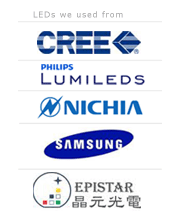News
Search
Popular search



The transition of traditional lighting manufacturers into LED is speeding up as Compound Fluorescent Lamps (CFL) subsidies come to an end in China, according to a China Business Journal report.
CFL subsidies released in early 2008 will be terminated at the end of 2014, bringing the lighting industry’s new round of competition to the LED industry.
“LED lighting industry is quickly developing,” said Lv Fangxiang, deputy director of China’s Phasing Out of Incandescent Lamps and Energy Saving Lights Promotion (PILESLAMP) Project. “LEDs already have strong competitive advantages in pricing and technology, and will become the future “star” product in the lighting industry.”
The project is researching LED promotion and product policies, and related government subsidies. Even before the project’s involvement, many local governments were already issuing subsidies to stimulate the industry. These local governments are vying LED market’s long term market value potential of generating billions of RMB.
As China’s CFL subsidies come to an end this year, conventional lighting manufacturers are quickly entering the LED industry, which will impact the industry that has mainly be led by SMEs.
Chinese electronic manufacturer Felio Acoustics announced on May 21, 2014 it will be acquiring LED manufacturer Beijing Shenan Lighting for RMB 1.85 billion (US$ 300 million). The aim of the acquisition is to open up LED luminaire and application supply chains, said Felio Acoustics management. Lighting manufacturer Shanghai INESA is also a subsidiary of Felio Acoustics.
“The company will be able to strengthen competitiveness in the LED business after acquiring the technology, products and systems after the merger,” said Li Zhijun, General Manager, Shanghai INESA.
Opple Lighting, Hangzhou Yuzhong Gaohong Lighting Electrical Equipment and Yankon Lighting have all strengthened LED business strategy, expanded production lines, or increased production capacity.
In early 2013, LED businesses accounted only five percent of Opple’s revenue share, but by the end of the year the percentage grew sixfold to 30 percent, and has grown another 10 percent this year to 40 percent.
International manufacturers are also actively deploying LED business strategies in the Chinese market.
Leading global lighting manufacturer Osram has invested heavily in the new LED package factory in Wuxi, China. The new factory has officially entered production on May 21, 2014.
Analysts noted the new factory will not only expand Osram’s LED manufacturing capacities, ease full utilization pressures, it will also impact the world’s largest lighting market.
“Asia, especially China has become the major growth momentum for the global lighting market,” said Osram CEO Wolfgang Dehen.



